Table of Contents
Bearded dragons (Pogona vitticeps) are 18-24” terrestrial lizards native to central Australia. They typically prefer a shrubland habitat.
These lizards have large triangular heads, rough scales, and spines along their sides, giving them a somewhat intimidating appearance. They also have a pouch under their jaw which can be inflated and darkened, thus the “bearded” moniker. In the wild they range from light tan to orange in color, but captive breeding has produced more saturated coloring and a wider variety of patterns.
Bearded dragons are one of the most popular pet lizards in the US, due to their personable dispositions and tolerance for human interaction. They typically live 10-15 years in captivity, although longer is possible.
Enclosure
Minimum terrarium size for bearded dragons
The minimum size recommended by leading experts for housing one bearded dragon is 48”L x 24”W x 24”H, or 120 gallons of space. Bearded dragons are primarily terrestrial, so plenty of floor space is the main concern. However, they are enthusiastic climbers, so vertical space is appreciated. Of course, if you can provide larger, do it! Your dragon will use every inch of space!
Can you keep two bearded dragons together?
No! Multiple bearded dragons should not be housed in one enclosure. They are a territorial species and may fight/injure each other. With bearded dragons, dominance disputes can turn into real fights, which could cause one or both bearded dragons to be injured or even killed.
You may have seen bearded dragons housed together who seem to get along, but they are not “friends” as it may appear. At best, bearded dragons housed in the same enclosure establish a truce, but they are unable to escape from each other, and this causes stress. Cohabitation comes with many risks and very few benefits to the bearded dragon.
How to quarantine a bearded dragon
Note that it’s best to quarantine your new bearded dragon first. Quarantine is the practice of keeping an animal isolated and under sterile conditions in order to reduce the potential spread of disease.
Even if you don’t have other reptiles that could potentially get infected by anything the bearded dragon might be carrying, maintaining quarantine conditions for the first 3-6 months will enable you to more easily monitor for concerning symptoms and more easily treat them as well. You can do this with the same enclosure that you plan to keep the dragon in long-term, or you can do this with a tall tub. As long as it is set up appropriately, a tub can make appropriate short-term quarantine housing.
Some rules for successful bearded dragon quarantine:
- Keep the dragon in a separate room from other reptiles.
- Do not use the same equipment for the new beardie as for your other reptiles.
- Fully disinfect the enclosure weekly.
- Get the dragon checked by an experienced reptile veterinarian and treated for parasites if needed.
- Test for possible diseases, such as atadenovirus.
- Observe for symptoms of disease or illness, such as yellow fungus.
- Always wash your hands after handing the bearded dragon and avoid cross contamination with tools such as feeding tongs, bowls, etc.
- Keep the bearded dragon on substrate such as paper towel or non-adhesive shelf liner during this quarantine time.
A bearded dragon should be completely healthy before being transferred out of quarantine to its long-term setup.
Lighting
Do bearded dragons need UVB?
Yes! It's critical to their health!
Bearded dragons will get sick and eventually die without UVB as part of their environment. The best UVB bulbs for bearded dragons in a 48” long enclosure are:
- Zoo Med Reptisun T5 HO 10.0
- Arcadia Desert 12%
The bulb should be roughly half the length of the enclosure. For best results, use an Arcadia or Vivarium Electronics fixture. Arcadia 12% UVB Kit T5 HO Bulb, 24W.
The basking area should be placed so the bearded dragon’s back is 14-16” below the lamp during basking. However, if there is mesh between the lamp and your dragon, then the basking area should only be 8-12” below the lamp, because UVB is partially blocked by mesh.
Alternatively, you can use the more powerful Arcadia Dragon 14% bulb. With this bulb, basking distance should be increased to 15-20” without mesh, or 9-13” with mesh.
UVB is blocked by glass and plastic, so you can’t give your beardie UVB by placing its terrarium in front of an open window. If you ever have any questions on UVB, please don't hesitate to reach out to our customer service team!
How to measure UVI
The strength of a lamp’s UVB output is measured in UV Index, or UVI. Coincidentally, this is the same measurement that the World Health Organization uses to measure risk of skin damage from exposure to solar radiation. Fortunately, you don’t have to worry about your beardie getting skin cancer as long as you use UVB correctly. The best way to measure UVI in your bearded dragon’s enclosure is with a Solarmeter 6.5.
To use the Solarmeter, hold the device vertically at the height of the basking surface, with the lens pointing directly up at the lamp. Bearded dragons should have a basking UVI between 4.0-6.0, with UVI everywhere else in the enclosure being lower. Although there is a basking distance recommended in the previous section, note that factors such as the density of your terrarium mesh as well as the exact hood you’re using for your UVB lamp will affect the exact distance needed. As mentioned before, if you need any assistance calculating your UVI index, please reach out to customer service. We are happy to help!
Heating
Best temperature for bearded dragons
Bearded dragons need a basking temperature of 105-110°F, as measured by an infrared thermometer or digital probe thermometer, with the probe placed on the basking surface. For best results, use a large, flat stone as the basking surface. For example, a piece of slate would retain heat and be a great basking surface.
Turn off the heat lamp at night. Temperatures can drop as low as 60°F without ill effect, but shouldn’t be warmer than 78°F. Cooler temperatures help them sleep better and it is great on their metabolism!
Best way to heat your bearded dragon
There are many options for heating a bearded dragon enclosure: incandescent bulbs, halogen bulbs, red bulbs, blue bulbs, mercury vapor bulbs, ceramic heat emitters, etc. Which one is best for your pet? Does it matter?
It does, in fact.
According to experts, the best way to heat a reptile is with technology that most closely replicates the way the sun provides heat: halogen flood bulbs. Provide heat for your beardie with two high-wattage halogen flood bulbs placed close together over the basking surface. Why two? With two, you ensure you are covering more surface area and covering the entire bearded dragon while basking. Temps getting to hot? You could always implement a Rheostat to adjust temperatures as needed. Avoid using other options, as these are less effective at providing basking heat and may negatively affect your pet’s health. Always keep in mind, reptiles cannot feel belly heat.
How to measure terrarium temperature
Because surface temperature is important to monitoring temperature for bearded dragons, a digital probe thermometer isn’t quite enough. You need to use an infrared thermometer, also known as a temp gun. Industrial-grade temp guns tend to be the most accurate. Fortunately, infrared thermometers can be used not only for measuring basking temperature, but also monitoring the temperature gradient throughout the rest of the enclosure.
If you notice that your basking temperatures are too warm, dial down the bulbs’ heat output with a rheostat. If they are too cool, you will need higher-wattage bulbs.
Note: Surface temperature measurements are unlikely to be accurate for basking temperature if the basking surface is made from materials that do not absorb heat well: plastic, resin, ceramic, glass, crystal, etc. Stone, wood, soil, and sand absorb warmth best.
Humidity
Best humidity levels for bearded dragons
As a semi-arid species, bearded dragons should have average humidity levels between 30-60%, fluctuating lower during the day and higher at night. Humidity should be measured via digital probe hygrometer, with the probe placed in the middle of the terrarium.
If you live in a dry climate, it will be beneficial to lightly mist the enclosure with a sprayer every morning to simulate morning dew. If you live in a normal climate, once a week is fine, and if you live in humid conditions, no misting may be needed.
If your bearded dragon likes to dig, and if the enclosure is well-ventilated, you can pour water into the substrate on the cool side of the enclosure. This allows the dragon to dig itself a humid burrow as they would use in the wild.
Do bearded dragons get respiratory infections from humidity?
Bearded dragons are widely thought of as desert lizards, but there are many different types of desert, and just because an animal is from the desert doesn’t mean that exposure to water will immediately harm them. This is a common myth in the bearded dragon community: that any kind of water or humidity in their environment will immediately cause a respiratory infection.
The truth is that respiratory infections are caused by consistently wet conditions, poor hygiene, poor ventilation, and/or low temperatures. This is because these conditions weaken a bearded dragon’s immune system and encourages pathogen growth within the enclosure.
Substrate
Best substrate for bearded dragons
The best substrates for bearded dragons include:
Layer the substrate at least 4” thick to give your beardie room for burrowing. Avoid wood mulch/bark substrates, paper-based substrates, or substrates with dyes.
To keep the substrate clean and your dragon healthy, remove old food and waste every day, along with contaminated substrate. You will need to completely remove and replace your substrate every 3-4 months.
If you're not considering a loose substrate option, you might want to explore our Reptile Habitat Mat instead. It's hassle-free to set up, a breeze to maintain, and simple to clean.
Does sand give bearded dragons impaction?
Substrate is a controversial topic when it comes to bearded dragons, because there’s a popular myth that loose substrate will cause impaction and potentially kill the dragon. The truth is that only unhealthy dragons with inappropriate husbandry are in true danger of substrate impaction. Otherwise, they would be dropping dead left and right in the wild, because their substrate in nature is sand or sandy soil. They occasionally ingest the substrate by accident, but a healthy bearded dragon can pass it through their digestive tract with no complications.
If you’re still worried, you can certainly use a solid substrate like slate tile, paper towel, non-adhesive shelf liner, or the 4x2 Reptile Mat. However, it’s worth nothing that using a substrate that mimics their natural environment is more aligned with their needs and behaviors.
Avoid sand substitutes at all costs! This includes calcium sand, vitamin sand, crushed walnut, etc!
What to know about cleaning a bearded dragon enclosure
Replacing your bearded dragon’s substrate is a good time to give the entire enclosure a good deep clean. Here are some general steps to follow:
- Remove your pet from the enclosure and put it inside a temporary, escape-proof holding container.
- Remove all substrate and decor.
- Vacuum and wipe down the enclosure to remove leftover particles.
- Apply a reptile-safe disinfectant to the floor and walls of the enclosure and let sit for the disinfectant’s recommended contact time. Products we recommend include F-10 or Zilla Terrarium Cleaner.
- Meanwhile, soak branches, rocks, hides, and other decor in a disinfectant rated for porous materials for the recommended contact time.
- If required, rinse the enclosure and the accessories with clean water to remove disinfectant residue. Allow everything to dry.
- Pour new substrate into the enclosure. Mix in water until uniformly moistened but not wet.
- Arrange décor.
- Reintroduce your beardie to the clean setup.
Some veterinary-grade disinfectant options that work for both porous and nonporous materials are F10SC, CleanBreak, and bleach solution. However, for porous materials, bleach solution should be in a 1:10 dilution, while you should use 1:50 for nonporous.
Can bioactive work for bearded dragons?
Absolutely. Bioactive vivariums can be a good choice of housing for bearded dragons because it gives them plenty of substrate to dig in, edible plants to forage from, and it’s generally more attractive than other options. Bioactive vivariums have the additional benefit of eliminating the need for total cleanouts, and a healthy vivarium always has a fresh, earthy aroma.
Some downsides of bioactive for bearded dragons are that they require at least one month to get established before the animal is introduced, which can be inconvenient. The plants that you use need to be nontoxic and sturdy enough to withstand nibbling. CUC (Clean Up Crew) organisms will get occasionally eaten, and maintenance in the form of plant care and occasional partial soil replacements are still necessary. Bioactive is also usually more expensive to set up in the short-term.
If you want to put together a bioactive setup for your bearded dragon, you will need all of the supplies recommended in this article, plus a few more things:
- bioactive-ready desert substrate mix
- clean leaf litter
- drought-tolerant, edible plants
- 6500K LED or fluorescent grow lamp, spanning most of the enclosure’s length
- CUC organisms to maintain a semi-arid environment
Good options for CUC for a bioactive bearded dragon vivarium include: dwarf white isopods, powder orange/blue isopods, springtails, superworms, and mealworms.
Décor
How to decorate a bearded dragon terrarium
A barren terrarium is boring to look at and boring for your bearded dragon to live in. With the right items, you can not only make the enclosure more attractive, but also more functional. It encourages your beardie to explore and exercise more.
At bare minimum, there should be a “cave” for your beardie to hide in, a sturdy climbing branch, and a piece of flagstone or slate for the basking surface, but it’s best to go well beyond that:
- More climbing logs/branches
- More caves
- Rocks
- Hammock
- Live (edible) succulents
Live plant options for bearded dragons
Because bearded dragons are omnivorous, they tend to nibble on any live plants in their enclosure. This means that you need to be careful in selecting plants that are not going to poison your bearded dragon if they get eaten. Here are some plants that are robust and do well in a well-lit, low-moisture environment:
- Aloe
- Christmas cactus
- Echeveria
- Elephant feed
- Gasteria
- Haworthia
- Iceplant
- Jade plant
- Mother of pearl plant
- Opuntia (spineless variety)
- Sempervivum
Larger, older plants are more expensive to buy, but they are also sturdier and more likely to survive your bearded dragon.
Do bearded dragons like to climb?
Despite being “terrestrial” lizards, bearded dragons are capable climbers, and they are frequently found hanging out in trees in the wild.
Food
What to feed to a bearded dragon
Bearded dragons are omnivorous, which means that they need to eat both plant- and animal-based foods to get the nutrition they need. The foods that they need are mostly insects and leafy greens.
Here’s a basic feeding schedule:
- Hatchlings (0-6 months old): Insects 2x/day, vegetables daily (60-80% protein)
- Juveniles (6-12 months): Insects 1x/day, vegetables daily (50-60% protein)
- Subadults and Adults (12+ months old): Insects 1-2x/week, vegetables daily (20-30% protein)
Variety is the key to providing a healthy, balanced diet for your beardie. The more variety you can provide, the better!
What are the best feeder insects for bearded dragons?
Use a rotation of at least three different kinds of feeders to meet your beardie’s protein needs. Here are some good options:
- dubias
- discoids
- red runners
- American roaches
- crickets
- black soldier fly larvae
- hornworms
- silkworms
- mealworms
- superworms
- snails
- grasshoppers
What are the best vegetables for bearded dragons?
The majority of vegetables in your beardie’s diet should be leafy greens, such as:
- alfalfa
- arugula/rocket
- bok choy
- brussels sprouts
- cactus pads
- carrot greens
- cress
- collard greens
- dandelion greens
- dill
- endive
- kale
- mustard greens
- radicchio
- red leaf lettuce
- romaine lettuce
- spinach
- turnip greens
Other vegetables can be used on an occasional basis:
- bell pepper
- carrots
- celery
- cilantro
- green beans
- mint leaves
- squash
- sweet potato
- wheat grass
- zucchini
You can also use flowers/flower topper to spruce up your beardie’s salads! Clover, dahlia, hibiscus, dandelion, and nasturtium are great options. Just make sure to source your flowers from an area free of chemicals and pesticides.
What treats can you give to a bearded dragon?
It’s tempting to give your bearded dragon treats all the time as a way to show your affection, but too many treats can cause dental decay and/or obesity. Offer one small treat no more often than 1x/week.
Fruit treats for bearded dragons:
- apple
- banana
- blackberry
- blueberry
- cherry
- fig
- grape
- mango
- papaya
- peach
- pear
- raspberry
- strawberry
Protein treats for bearded dragons:
- butterworms
- pinky mice
- wax worms
Do bearded dragons need vitamins?
You will also need calcium and vitamin supplements to help keep your dragon healthy. For calcium, we recommend Zoo Med Repti Calcium with D3, lightly dusted on all feeder insects. It’s okay to occasionally skip a dusting.
For vitamins, we recommend Rep-Cal Herptivite. This should be lightly sprinkled on your bearded dragon’s salad once a week.
Providing drinking water for bearded dragons
Of course, don’t forget a medium water bowl for your dragon to drink from! This should be shallow enough to prevent drowning and too small for the dragon to soak in. Change the water daily and scrub the bowl with a reptile-safe disinfectant weekly, or whenever it becomes soiled.
There is a common myth that bearded dragons shouldn’t have a water bowl in their enclosure because 1) they don’t drink standing water, and 2) the presence of water will dangerously increase enclosure humidity levels. Both are very false. Any reptile should always have access to clean drinking water.
Not observing your bearded dragon drinking water is normal and nothing to worry about! The majority of bearded dragons obtain their hydration from their leafy greens and live feeders.
Handling
How to handle your bearded dragon
Reptiles generally don’t appreciate petting and handling in the same way that dogs and cats do. That being said, bearded dragons tend to tolerate human interaction well. Here are some tips for success:
- Don’t grab the dragon from above. Instead, scoop from below.
- Support as much of its body as possible, especially the feet.
- Start with short handling sessions at first, then gradually make them longer.
Taming tips for bearded dragons
Bearded dragons are perceived as calm and gentle, so they’re often also perceived as easy to tame. However, this isn’t always the case. Bearded dragons can be defensive when they’re in an unfamiliar environment, especially when they’re young. Even if you have a calm beardie, you still have to work to gain their trust, and be especially careful to create a positive association with yourself in their mind. It’s best to encourage the beardie to come out of the enclosure and climb onto you on their own, rather than simply grabbing them whenever you’re in the mood for handling. Never grab a bearded dragon out from its hiding place, as this is a very effective way to make it feel unsafe.
Treats and hand-feeding are very effective for teaching your bearded dragon that you are not something to be feared, since hunger can motivate your pet to move outside of its comfort zone. Use soft-tipped feeding tongs to prevent getting bitten by accident.
How to provide enrichment for a bearded dragon
Enrichment is the practice of strategically providing items and activities to encourage a captive animal to exercise natural behaviors. This also helps increase activity, reduce stress, and generally increase the animal’s welfare.
Some argue that reptiles are “too dumb” to benefit from enrichment, but this is false. All reptiles can absolutely benefit from enrichment when it is provided in appropriate ways. Here are some ways to provide enrichment for bearded dragons:
- Rearrange the enclosure. If total overhauls are too stressful for your beardie, move one thing every so often at your pet’s pace. For some individuals, that may be once a month, for others they might like once a week.
- Puzzle feeders. Try putting a bug in a puzzle ball, or hanging a bunch of greens from the ceiling at head height.
- Scatter feeding. Instead of offering all their food in a bowl, make them work for it by putting it in multiple places all around the enclosure.
- Supervised explore time outside of the enclosure. Make sure to keep them away from situations that you can’t get them out of. If you take them outside, it’s best to enclose them in a pen so they don’t run off. When letting them explore indoors, ensure other potential predator pets like dogs or cats are safely secured.
Health
When should you take a bearded dragon to the vet?
Dogs and cats aren’t the only pets who need veterinary care — lizards get sick and need professional help the same as any other pet. If you notice that your beardie has any of the following symptoms, make an appointment with an experienced reptile vet right away:
- Noisy breathing
- Mucus discharge from the mouth/nose/eyes
- Persistent lethargy
- Unexplained weight loss
- Persistent lack of appetite
- Straining/inability to defecate
- Large patches of missing scales
- Open wounds
- Swelling or bumps anywhere on the body
- Sudden, unusually aggressive behavior
Dragons must get a fecal exam at least once a year, during their annual wellness checkup. Ideally, and most recommended, they should be tested every 6 months. It's common and generally safe for bearded dragons to have some parasites in their digestive tract, as long as the levels are low. It's crucial to differentiate between having a few parasites, which is normal, versus dealing with a full-blown parasite infestation.
You can find a reputable reptile vet near you with the ARAV Find a Vet tool.
Bearded Dragon Resources
*This care sheet contains only very basic information. Although it’s a good introduction, please further your research with high-quality sources. The more you know, the better you will be able to care for your pet!

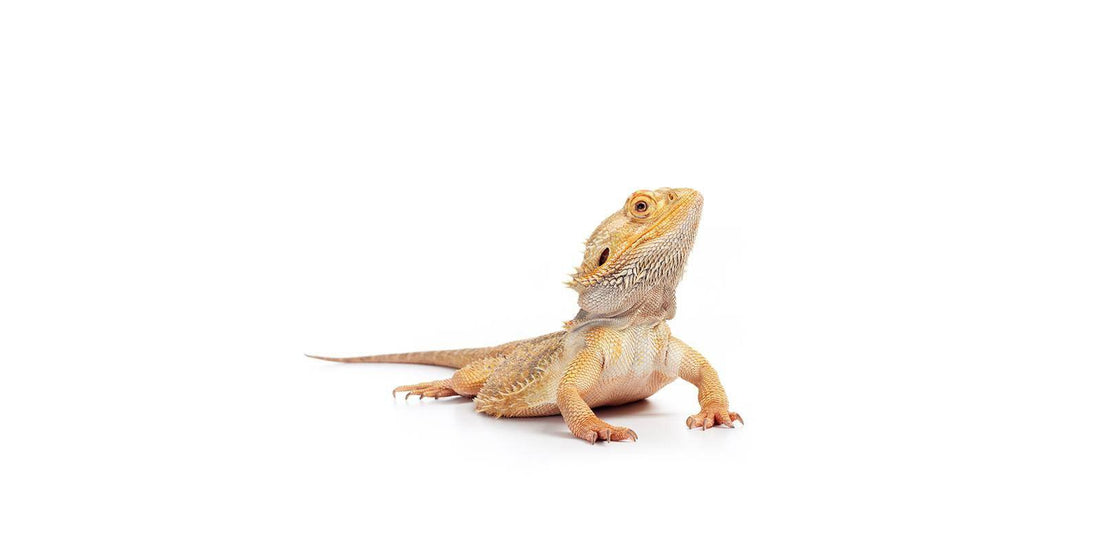


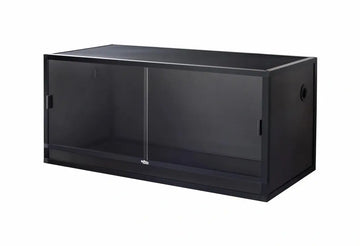

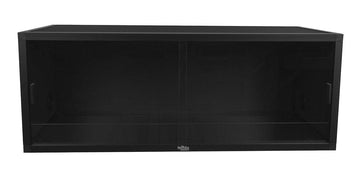

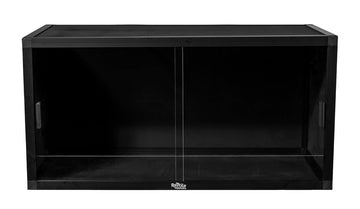
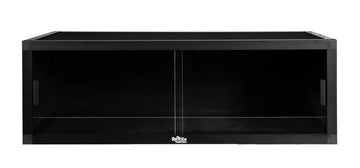


2 comments
Glad you like it! The greens recommendations here are largely based on what’s recommended in ReptiFiles’ bearded dragon care manual. As stated in this care sheet, “Variety is the key to providing a healthy, balanced diet for your beardie. The more variety you can provide, the better!” Spinach is a great source of iodine, which is a bit hard to find in other greens, so it’s still a valuable part of any feeding rotation.
This is a very thorough and accurate (to my knowledge) guide for bearded dragons. Very well done. (I do wonder about the spinach being included in the leafy greens list, I think it’s ok in small amounts, but I wouldn’t consider it a good staple food)